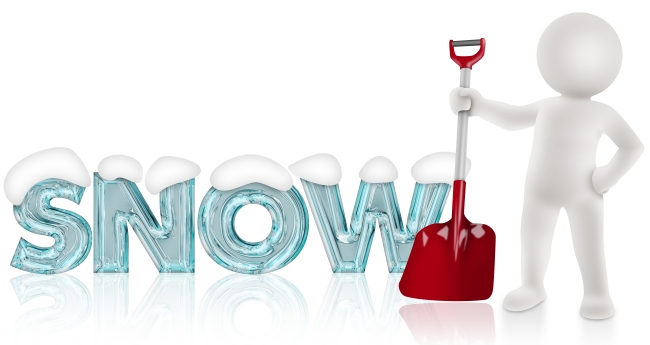 With the first dusting of snow upon us and the reminder that winter on its way, we thought it would be a good time to talk about snow shovelling safety. Improper snow shovelling technique can place you at an increased risk for injuries ranging from sprains and strains to significant back injuries. It is always important to put safety first and take the necessary precautions to prevent hurting yourself.
With the first dusting of snow upon us and the reminder that winter on its way, we thought it would be a good time to talk about snow shovelling safety. Improper snow shovelling technique can place you at an increased risk for injuries ranging from sprains and strains to significant back injuries. It is always important to put safety first and take the necessary precautions to prevent hurting yourself.
Here are some things you should do:
1. Assess your health: Are you feeling under the weather? Do you have any issues with your heart such as heart disease, history of heart attack or high blood pressure? Do you lead a sedentary lifestyle? Although it may not seem like it, shovelling is a physically challenging activity. If you are unsure if it is safe for you to shovel, consult with your family physician.
2. Warm up: Before you start shoveling walk or march in place to warm up your muscles. It is also important to stretch before and after shovelling to help prevent injury.
3. Dress appropriately: Make sure you dress in layers to stay warm but are still able to bend your knees and arms without restriction. Ensure you are wearing boots with good treads to prevent slips and falls.
4. Drink water: Prevent dehydration by drinking plenty of water before and after shovelling.
5. Use a good shovel: An ergonomically designed shovel with a curved handle will help to prevent fatigue and injury. Your shovel should be sturdy but light weight.
6. Take breaks: Don’t push yourself to fatigue. Try shovelling for 5-7 minute then take a 2-3 minute break. Take longer and/or more frequent breaks if necessary.
Proper Shovelling Technique:
1. Always try to push snow instead of lifting it
2. Stand with feet hip width apart
3. Hold shovel close to your body
4. Bend from your knees not from your back
5. Tighten your core muscles when lifting snow
6. Do not twist at the waist. Always point your toes in the direction you are pushing, lifting or throwing the snow.
Stay Safe:
Shovelling snow is a strenuous activity that forces your heart to work very hard. It is important that you monitor the following warning signs: discomfort or heaviness in your chest, arms or neck, feelings of dizziness, nausea or faintness, unusually long period of shortness of breath, and excessive sweating. If you experience any of these symptoms take a break. If you still feel unwell after a rest, or suspect a medical problem, seek emergency medical attention immediately.
Happy Shovelling!